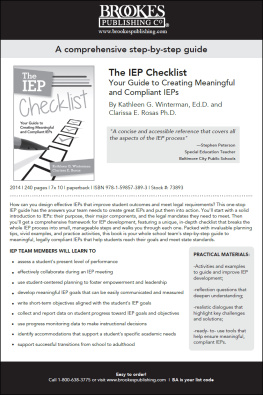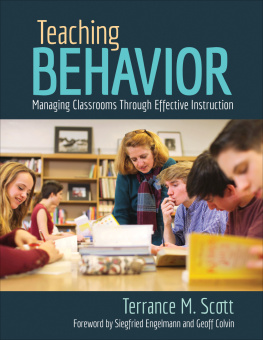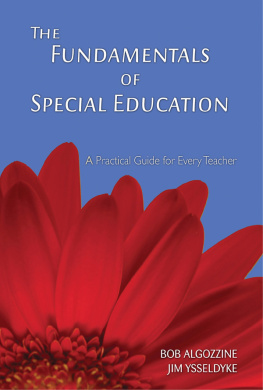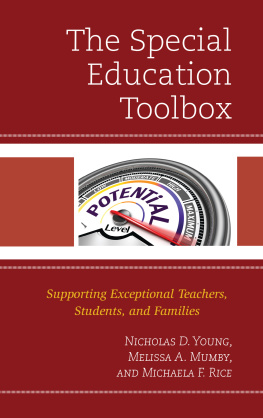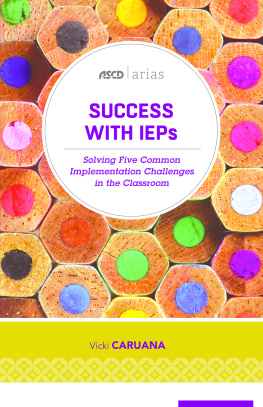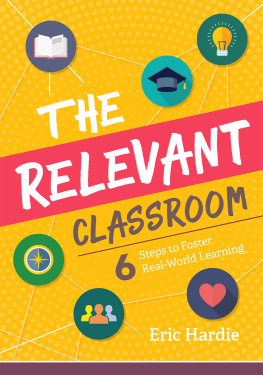Critical Components
for
SUCCESS
in the
Special Education Classroom
To our grandchildren: Klaudia, Colin, Liliana, and Emmy Benjamin, Molly, and Macy
Critical Components for SUCCESS in the Special Education Classroom
Marcia Rohrer Nannette Samson
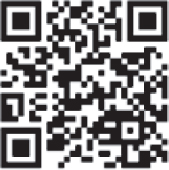
10CriticalComponents.com
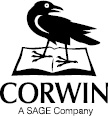

FOR INFORMATION:
Corwin
A SAGE Company
2455 Teller Road
Thousand Oaks, California 91320
www.corwin.com
SAGE Ltd.
1 Olivers Yard
55 City Road
London, EC1Y 1SP
United Kingdom
SAGE Pvt. Ltd.
B 1/I 1 Mohan Cooperative Industrial Area
Mathura Road, New Delhi 110 044
India
SAGE Publications Asia-Pacific Pte. Ltd.
3 Church Street
#10-04 Samsung Hub
Singapore 049483
Acquisitions Editor: Jessica Allan
Associate Editor: Kimberly Greenberg
Editorial Assistant: Cesar Reyes
Project Editor: Veronica Stapleton Hooper
Copy Editor: Pam Schroeder
Typesetter: Hurix Systems Pvt.Ltd
Proofreader: Wendy Jo Dymond
Indexer: Sheila Bodell
Cover Designer: Janet Kiesel
Marketing Manager: Stephanie Trkay
Copyright 2014 by Corwin
All rights reserved. When forms and sample documents are included, their use is authorized only by educators, local school sites, and/or noncommercial or nonprofit entities that have purchased the book. Except for that usage, no part of this book may be reproduced or utilized in any form or by any means, electronic or mechanical, including photocopying, recording, or by any information storage and retrieval system, without permission in writing from the publisher.
All trade names and trademarks recited, referenced, or reflected herein are the property of their respective owners who retain all rights thereto.
Printed in the United States of America.
A catalog record of this book is available from the Library of Congress.
ISBN 9781483339160
This book is printed on acid-free paper.
14 15 16 17 18 10 9 8 7 6 5 4 3 2 1
Contents
Preface
W hen we first started teaching in our classrooms years ago, we never dreamed that one day we would be writing a book for teachers with the goal of helping them learn how to better meet the needs of their students with disabilities. However, as we reflected on this, we realized that the birth of this book actually began those many years ago and continued through all the years thereafter as we worked in many different districts, schools, and classroom settings and with many different students and their families.
While each of us has always had good instincts for creating structured environments to support student learning and have accumulated many years of success in our own classrooms, our knowledge of what it takes to truly support student learning has evolved greatly since our early years in the classroom. This journey was influenced by many factors. Without these factors and experiences, we might never have reached the point of creating this book. The hundreds of students and their families with whom we have worked, the other educators with whom we collaborated, and the continual training to which we have had access have all contributed to the high level of our expertise in the field of special education.
After leaving our respective classrooms, we both served on our districts autism and special education support team. This provided us great opportunities to observe many different teachers and different classroom settings. Over and over again, our supervisors came to us requesting that we help another teacher with just this one student. We knew from our own experiences that, sometimes, there is one student who can challenge a teacher in ways that he or she has not been challenged before. We also knew that all students can learn when a classroom is set up for success and the teacher has strategies and knowledge about how to apply those strategies. As we began to travel and work in different school districts, it became apparent to us that we needed a way to help teachers organize the various elements in their classrooms. We needed a framework to organize the important elements that needed to be addressed in each special education classroom.
In order to assist teachers in seeing the big picture of what was needed for success in their classrooms, we began developing areas or categories that need to be addressed by all special education teachers. These components were actually developed to assist us in helping teachers who were struggling with how to manage a special education classroom effectively. We identified 10 major components: physical arrangement of the classroom; organization of materials; schedules; visual strategies; behavioral strategies; goals, objectives, and lesson plans; instruction; communication systems and strategies; communication with parents; and related services and other school staff.
This book contains foundational information on each of these 10 areas, forms for you to copy and use, and a list of resources to guide you as you investigate further into the topics. We strongly encourage you to research these topics, learn, and explore much more in depth than we have gone into in this book. We are giving you the blueprint. It is up to you to provide the detailed plans and customize the information to meet the needs of your students.
It is also important for you to know that this book is not about the research that supports the information it contains. We are well aware of the need to base your instructional strategies as well as your classroom management on evidence-based strategies. You are welcome to, and likely should, explore the research that supports the information contained here. It will help you understand more fully why the strategies and ideas we present in this book work.
From our own experiences as teachers, and now as consultants, we have come to the conclusion that the 10 critical components are absolutely necessary for creating a foundation that supports our students success. We are constantly emphasizing to teachers and administrators that none of these components stand alone. They work together, and all must be in place to ensure a successful special education classroom. Teachers regularly confirm what we have learned from our own experiences: Not only does it make their jobs easier when they implement the 10 critical components, but more importantly, they also recognize that all their students benefit.
Whether teaching social skills to students, doing school consultations, conducting in-home and parent training evaluations, leading workshops for parents, or presenting our two-day workshop on which this book is based, we are always mindful that our business is about the students and helping them achieve their goals and potential. This book is a tool that will help all special education teachers. Whether you are a preservice teacher or one with experience, we know that your students will benefit from your using these 10 components as the foundation for your approach in your classroom.
Acknowledgments
T his book would not have been possible without what weve learned from all the students and their families with whom we have had the privilege of working during our careers in education.
the experiences and knowledge shared with us by other educators and therapists over the years.
the personal support and encouragement from our friend and colleague Nancy Kling and the professional opportunities and experiences she has provided us through Behavior Plus, Inc. She inspired us to become authors after she wrote and published her book,
Next page

